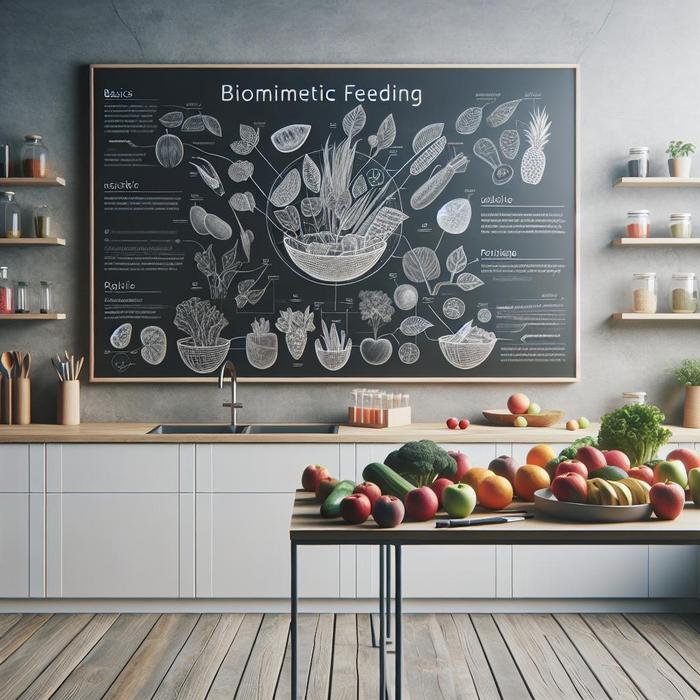Understanding Biomimetic Feeding: A Lifesaver for New Parents
Welcome to the world of parenthood! It’s a rollercoaster ride filled with unbounded love, unmatched joy, and let’s face it, a fair amount of confusion. One common challenge you may face as a new parent is understanding the feeding basics, especially if breastfeeding is not a viable option. This is where biomimetic feeding comes to your rescue.
So, What is Biomimetic Feeding?
Biomimetic feeding stems from the term ‘biomimicry’, which refers to emulating or imitating natural systems or elements to resolve complex human problems. In terms of feeding, biomimetic bottles are designed to mimic the natural shape and function of a mother’s breast. These bottles encourage a natural latch, similar to breastfeeding, offering immense comfort to your baby while reducing nipple confusion, making it an ideal choice for busy parents who opt for mixed feeding (breastfeeding and bottle feeding).
Trustworthy Brands in Biomimetic Feeding
Several brands have invested heavily in research and development to offer the best biomimetic feeding solutions. Here are some trusted brands worth considering:
– Nanobébé focuses on preserving breast milk nutrients along with providing the ergonomic shape of a mother’s breast.
– Comotomo is known for its soft, skin-like silicone baby bottles, creating an experience that mimics breastfeeding. You can learn more about their approach to biomimicry here.
– Tommee Tippee designs bottles that reflect the natural flex, stretch, and movement of a mother’s breast.
– Philips Avent has a wide range of Natural baby bottles, enhancing the biomimetic feeding experience. Further insights on their innovations can be found here.
Non-Biomimetic Feeding brands: Valuable Alternatives
While biomimetic feeding is an excellent approach, it’s essential to stress that other brands, although not explicitly focused on biomimicry, offer high-quality feeding solutions worth exploring. Some of these brands include Dr. Brown’s, MAM Baby, Medela, Lansinoh, Playtex Baby, and NUK.
The Science Behind Biomimetic Feeding
The core philosophy of biomimetic feeding is rooted in a scientific approach called biomimicry. This theory entails studying and emulating nature’s best ideas to solve human challenges – in this case, infant feeding problems. It’s a fascinating field that combines biology, engineering, and design, resulting in products that provide comfort to both the baby and parents.
Biomimetic feeding aids in reducing common feeding problems like colic, gas, and reflux by copying how babies feed on their mother’s breast. It also helps to maintain the vitamins and other beneficial compounds in the milk, ensuring the baby gets all the required nutrients.
Is Biomimetic Feeding Right for You and Your Baby?
The answer to this is personal and varies from one family to another. For some, biomimetic feeding can be a game-changer, providing the perfect transition from breast to bottle. For others, non-biomimetic options may work just as well.
The key is to find a feeding solution that suits your lifestyle and comfort, and most importantly, your baby’s needs. If you’re curious about how biomimetic feeding can soothe your baby, you can explore further here.
Remember, no matter what feeding method you choose, the bottom line is a happy, nourished baby and a less stressed you. You’re doing a great job, dear parent. Keep going!
My Personal Journey with Biomimetic Feeding
As a digital marketing expert, my professional life revolves around identifying unique value propositions, primarily in the tech domain. However, becoming a parent for the first time gave an entirely new meaning to my understanding of “unique value propositions.”
One of the most profound experiences came from navigating the intricate world of infant feeding. My spouse and I faced a dilemma we weren’t prepared for – breastfeeding challenges. We were introduced to biomimetic feeding by a friend, who was also a new parent.
Finding the Right Biomimetic Bottle
With an array of brands available, selecting the right biomimetic bottle was a task in itself. We researched extensively, following detailed reviews, product feature analysis, and even some personal trials. Here’s what we learned:
– The physical structure of a biomimetic bottle is crucial. It should provide an easy latch, seamless milk flow, and be easy for the baby to grip.
– Material safety is of utmost importance. BPA and phthalate-free plastic is a must.
– A wide neck bottle is easier to clean.
– Vent system- A good vent design prevents air from mixing with the milk, minimizing colic, gas, and reflux.
Articles like these gave us more insights into the intricacies of biomimetic feeding.
Interlude: The Transition from Breast to Bottle
The first weeks with our biomimetic bottle were intriguing. We faced some challenges during the transition phase. The biggest one was getting our baby to accept the new bottle.
With time, patience, and numerous feeding attempts, we started seeing the benefits. Feeding sessions became less stressful. Our baby experienced reduced colic symptoms, and as new parents, we felt more relaxed.
The Impact of Biomimetic Feeding on My Child’s Health
We began to notice significant improvements in our baby’s overall health. Our paediatrician confirmed the same during routine check-ups. Further studies, like this one, we found online also validated the advantages of biomimetic feeding in infant health and growth pattern.
Value-Based Optimization in the Context of Biomimetic Feeding
As a digital marketer, my primary role is finding and sharing value. Interestingly, my journey as a parent taught me how value-based optimization applies outside the digital world as well. In our case, we experienced significant value in adoption of biomimetic feeding, which signified better health for our baby and less stress for us.
Beyond Feeding Basics – The Long-Term Benefits
With months of experience, we realized the advantages of biomimetic feeding were not restricted to only feeding times. They extended to influence our baby’s growth patterns, sleep cycles, digestion, and overall disposition.
Seeing the transformation, more than convinced us about the long-term benefits of being attuned to our child’s natural feeding patterns. If you’re a parent looking to embrace a similar approach, read more on the long-term benefits of biomimetic feeding here.
Considerations for Parents Selecting a Feeding Option
It is essential for parents to remember that every baby is unique. What works for someone else’s child may not necessarily work for yours. Always consult with a healthcare provider before making any significant change to your baby’s feeding routine.
Final Takeaway: There is No One-Size-Fits-All
Every baby and every parenting journey is unique, and the same applies to feeding options. Our aim should be understanding our child’s unique needs and responding accordingly. We, as parents, are capable of making the best decisions for our child.






